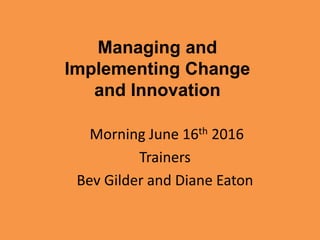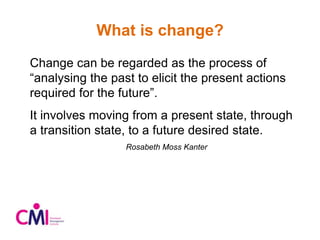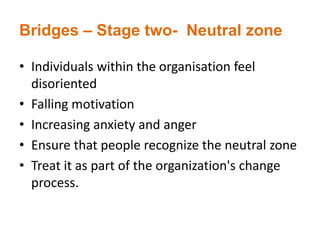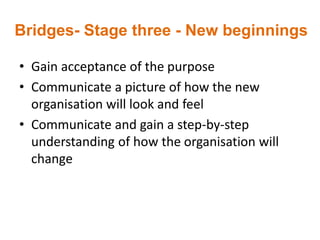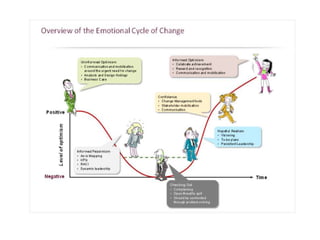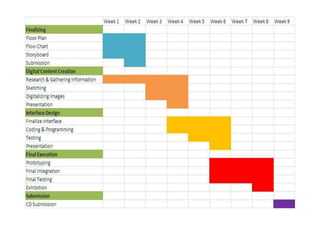This document provides an overview of managing and implementing change and innovation. It discusses reasons why organizations need to change, such as performance gaps, new technologies, and external pressures. Several change management models are introduced, including Lewin's 3-stage model, Bridges' transition model, and Kotter's 8-step model. Tools for analyzing change such as PESTLE and stakeholder analysis are also covered. The document outlines how to develop a change implementation plan and deal with resistance to change through communication and involvement of stakeholders.
